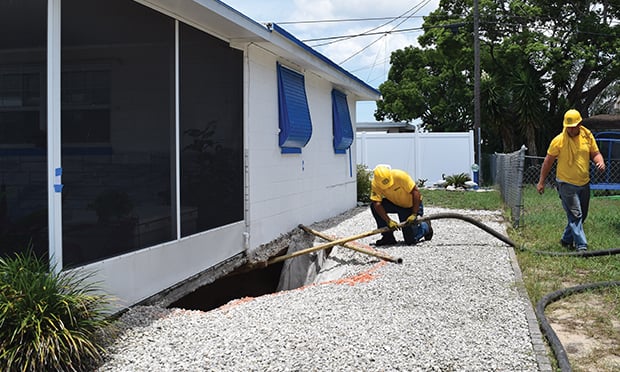 Sinkholes are the result of water collecting underground without some sort of external drainage mechanism. As the water collects, it erodes the bedrock and creates underground spaces. (Photo: Helicon)
Sinkholes are the result of water collecting underground without some sort of external drainage mechanism. As the water collects, it erodes the bedrock and creates underground spaces. (Photo: Helicon)
Some sinkholes may develop without warning, while there may be several signs before others develop. Those occurring on the outskirts of a commercial property may go unnoticed and create specific structural issues for buildings.
Recommended For You
Want to continue reading?
Become a Free PropertyCasualty360 Digital Reader
Your access to unlimited PropertyCasualty360 content isn’t changing.
Once you are an ALM digital member, you’ll receive:
- Breaking insurance news and analysis, on-site and via our newsletters and custom alerts
- Weekly Insurance Speak podcast featuring exclusive interviews with industry leaders
- Educational webcasts, white papers, and ebooks from industry thought leaders
- Critical converage of the employee benefits and financial advisory markets on our other ALM sites, BenefitsPRO and ThinkAdvisor
Already have an account? Sign In Now
© Touchpoint Markets, All Rights Reserved. Request academic re-use from www.copyright.com. All other uses, submit a request to [email protected]. For more inforrmation visit Asset & Logo Licensing.







